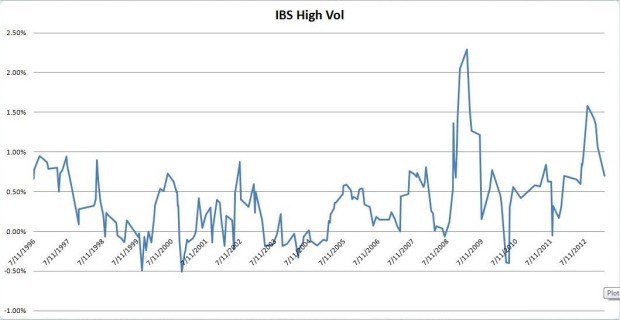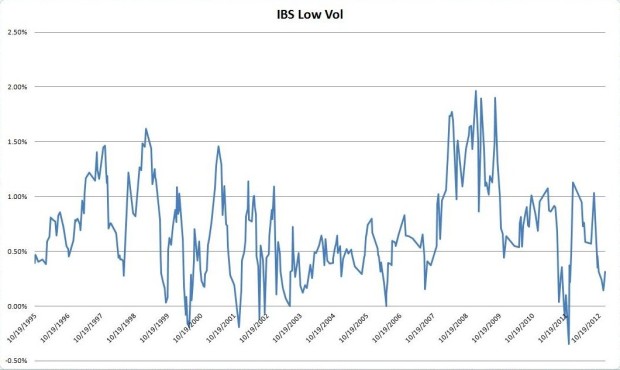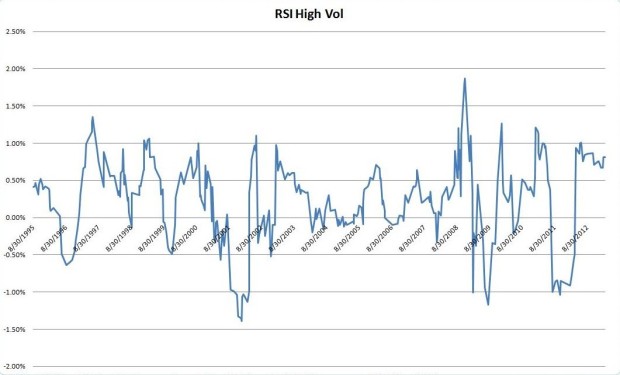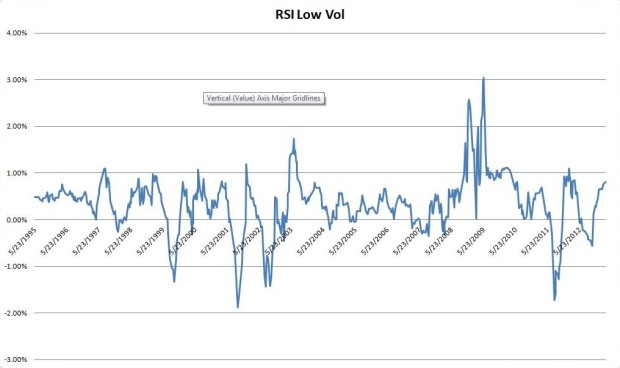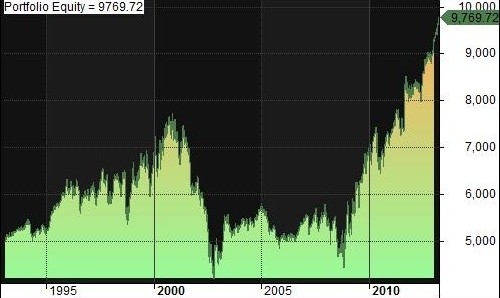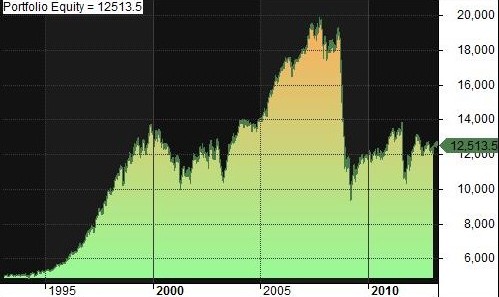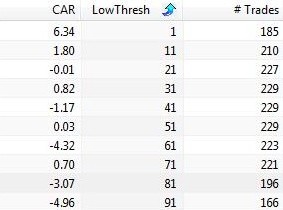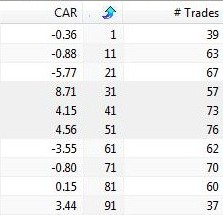Even though I’ve moved from swing trading to intraday trading I’m still relatively clueless regarding what exactly constitutes ‘High Frequency Trading’ and the prominent strategies within the domain. I’ve been reading a bit about it lately from Scott Patterson’s Dark Pools, an informative thread on Elite Trader, and I’ve chatted with a few locals who gave me a big picture view of the HFT space. I won’t delve into the debate of whether or not HFT is beneficial for market liquidity because I don’t have enough knowledge of market microstructure yet to understand the impacts of HFT.
General HFT
Here are some general facts on what I’ve learned so far:
- Strategies are generally divided into liquidity-taking (gross positive, profit off prediction) and liquidity-providing (gross negative, profit off rebates).
- HFT are VERY active in the ES markets. Most likely the most HFT-dominant market.
- During mid-day when manual traders are less active, algorithmic activity is easier to detect and predict (I haven’t seen this myself, just heard from a trader).
- Some strategies rely purely on exotic order types specifically designed by exchanges (Scott Patterson’s Dark Pools steers towards the idea that the majority of HFT exploits are derived from exotic order types but I’ve read conflicting opinions).
- As one increases complexity and decreases latency sensitivity of a strategy, you increase its life expectancy, at the expense of increased risk (lower sharpe) and longer development time.
- Time to deployment of a strategy varies widely. Some can be rolled out within hours to take advantage of opportunistics conditions created by information events. Others can take months to research.
- “A typical [profit and loss] ratio for non-equities trading (equities trading is quite different due to rebates) might be something like 90% scratches, 8% winners, 2% losers. Expected profit on the order of 1/10 tick per contract traded overall”
- The golden age of HFT is on a decline. Profit margins are shrinking and firms are closing left and right due to increased competition and low volatility within the markets.
- Payouts from firms to the traders are commonly approaching 50% for highly supported operations, and up to 80% for capital backing.
- All of the strategies are mainly variants of a core theory, but there are many excruciating details that can separate winners from losers
- Some HFTs are profiting from other HFTs
- Book order data is always recorded directly from the exchange, not typically bought from a third party vendor. Nobody uses consolidated feeds.
- Speed in the market is important because of the need to send orders quickly and the ability to cancel quickly before adverse moves
- Certain firms doing HFT in FX have “last look” privileges, allowing them to sit on an order and then decide if they will fill it. However if a firm does this too often (since providers get a report on last look rates) they lose order flow.
- To break in the industry out of college, one should be CS/Math undergrad and/or post-grad from top school and unanimous passing of panel interviews. For someone with industry experience it’s all about the track record and fit.
- For top-notch speed, equities is more expensive than futures connectivity. I believe this is due to inter-colocation costs. Paraphrased: one should be colocated on all lit exchanges at the very least, and also good dark pool access to make consistent money.
- ROC is through the roof for HFT (500% is normal) but ROC isn’t as closely monitored. More importants statistics is risk/reward, where risk is relatively hard to define.
- Sample specs for a colo-ed server: “Dell, customize an R620 with the highest end CPU(s) and that’s in the $5K-$10K general price range without any super customizations. 10G, centOS, 4/8/16 core arrangements”
- They do not synchronize their clocks. For anything truly low latency, protocols such as NTP will most likely skew data at some part. All time analysis is measured relative to one central point (when data packet was received/when order was sent out)
- With equities, relying on a single stock’s book order data will be enough to generate alpha for the system (net rebates) but for futures, one typically has to look at similar products too to use as a hedge or possibly prediction
- Queue position is extremely important and can be used as an alpha signal in and of itself
Strategies
Here are some common strategies I’ve found that rely more on speed and less on prediction:
- Single product scalping: Working the bid and offer in a product and trying to capture the bid/ask spread.
- Inter-exchange arbitrage (Latency arb): Buying and selling the same product across multiple exchanges. Takes advantage of differing charactistics of exchanges and brokerage routing practices.
- Futures vs. Spot basis spread trading: ES vs. SPY, EURUSD vs. 6E, etc.
- Reaction to news: There are two forms: predictable news such as earnings announcements from feeds (NTKN, Reuters, DJ), and nonpredictable news such as trading halts.
A VERY basic market making model is as follows:
- EdgeRequired = .1 ticks (user-defined)
- TheoPrice = (BidPrice *AskVolume + AskPrice*BidVolume)/(AskVolume + BidVolume)
- MyBid = TheoPrice – EdgeRequired
- MyAsk = TheoPrice + EdgeRequired
The industry strategies are evolving to become more based on mathematical prediction rather than speed. I would believe this is to due to the fact that the speed advantage is dying out. Scott Patterson also states in his book that the speed advantage is almost gone and more and more firms are looking towards mathematical techniques to generate alpha.
Backtesting:
HFT strategies are very hard to backtest with strictly pure market making strategies. Common methodologies include:
- Walk Forward: Simply use 1 lots to see if a strategy is profitiable. Scale if it is.
- Trial and Error: Tweak settings whilst running a strategy with its former version to see which is more effective.
- Post-trade Analytics: Analyze the trades you got into in order to improve the strategy.
- Historical Data Analysis: Analyzing historical market data, but this typically isn’t traditionally backtesting where one simulates fills
Backtesting isn’t very common but there are a few players who have done it successfully due to sophisticated analysis. The software used is sophisticated enough to realistically simulate results. They incorporate information such as latency-distribution, queue position, exchange-specific information.
Abuse
There are also abusive practices I’ve stumbled upon:
- Quote stuffing: Jamming up exchange lines with messages with the intent to slow down other participants.
- Spoofing: Showing size on the market that you don’t intend to trade to trick other participants to move the market in a certain direction.
- Flashing: Adding/Cancelling orders here and there to feel out other participants’s reaction.
- Exotic order types: Certain order types are somehow abusive. Patterson’s book says that order types allow queue jumps but I haven’t read anything to confirm this. Patterson’s book says that this occurs very commonly but I haven’t read much on it outside of his book. Supposedly more concentraded in equities.
There are some newer abusive practices that I’ve stumbled upon from following Nanex articles. For example, from what I understand, a company that released earnings at 4:00pm made a signficant jump right before the close yet AFTER 4:00pm period due to HFT activity. Theoretically, one should not have been able to trade during this period; the only change in price should arise from trade settlement.
Firms
More-well known firms within the industry:
- Teza
- Getco
- Virtu
- HRT
- Citadel
- Tower
- QuantLabs
- RGM Advisors
- Spot
- Peak 6
- Optiver
- IMC
- Jump
- Allston
- Volant
- XR
- Ronin
- EWT
- Eagle 7
- Wolverine
Setting up
I couldn’t find much on setting up a practice, but here’s the limited information I did come across:
- Big banks such as GS, JPM, ABN are the best brokers for HFT. There are a few competitive non-banks such as NewEdge. After scaling up sizeably they are relatively the same and differences are purely preferences.
- Bigger brokers expect about $1 million in commissions each year from HFT
- You HAVE to write your own routing software through DMA rather than relying on a routing platform
- Advantage Futures is a good alternative for retail traders to get DMA
Questions I still have:
- Does HFT use leverage? On one hand leverage doesn’t seem that difficult to get access to, but on the other HFT strategies seems limited on capacity. From what I’ve read it doesn’t seem that they use a lot of leverage.
- What are public resources for learning how to do this on more of a retail basis? Being able to pull it off may be out of the question but at least learning some of the tactics may be beneficial.
If someone more knowledgable on the topic wants to chime in or message me to inform me better of the topic, it would be much appreciated!

